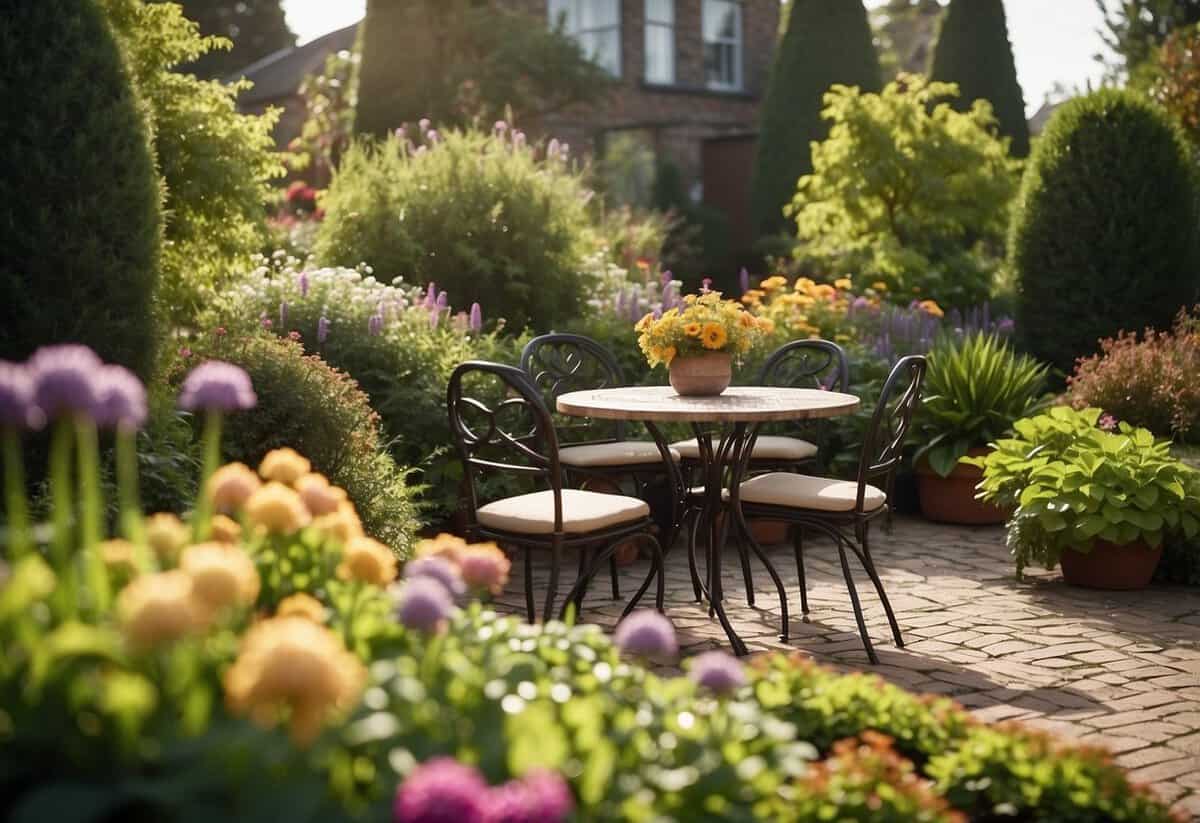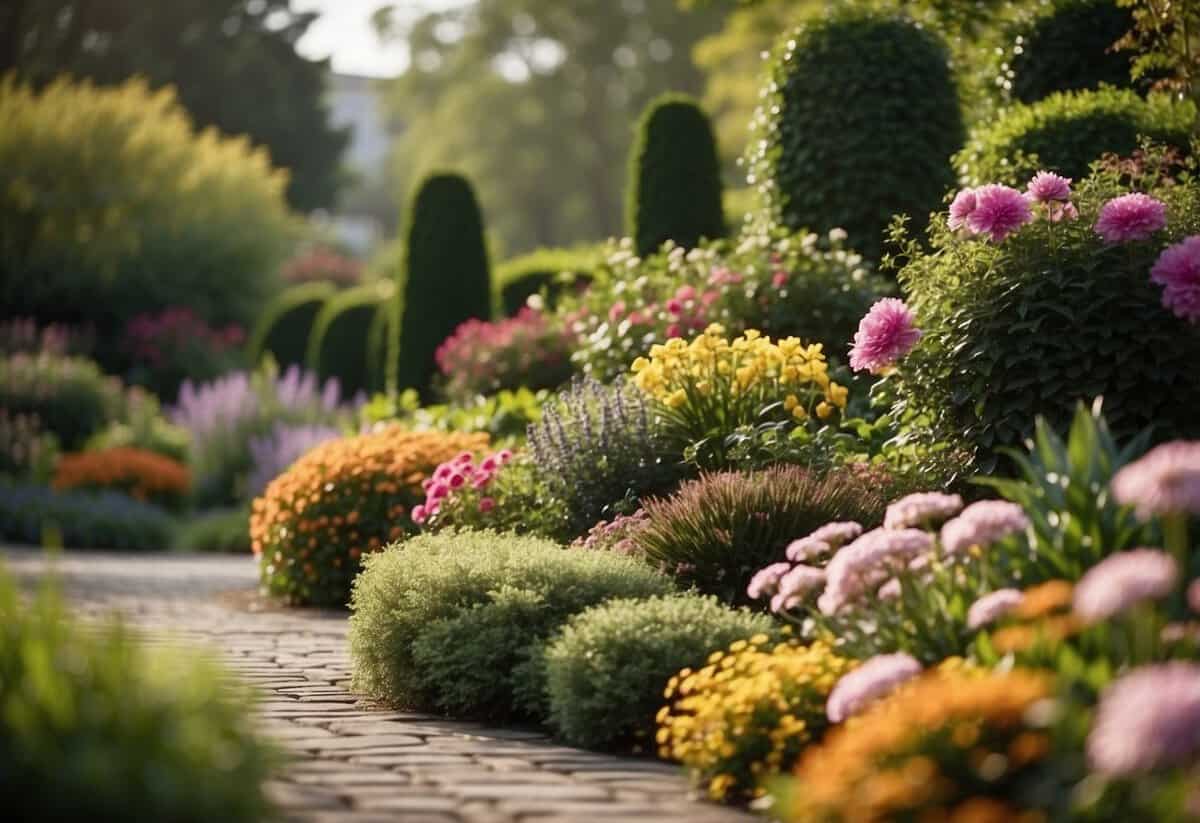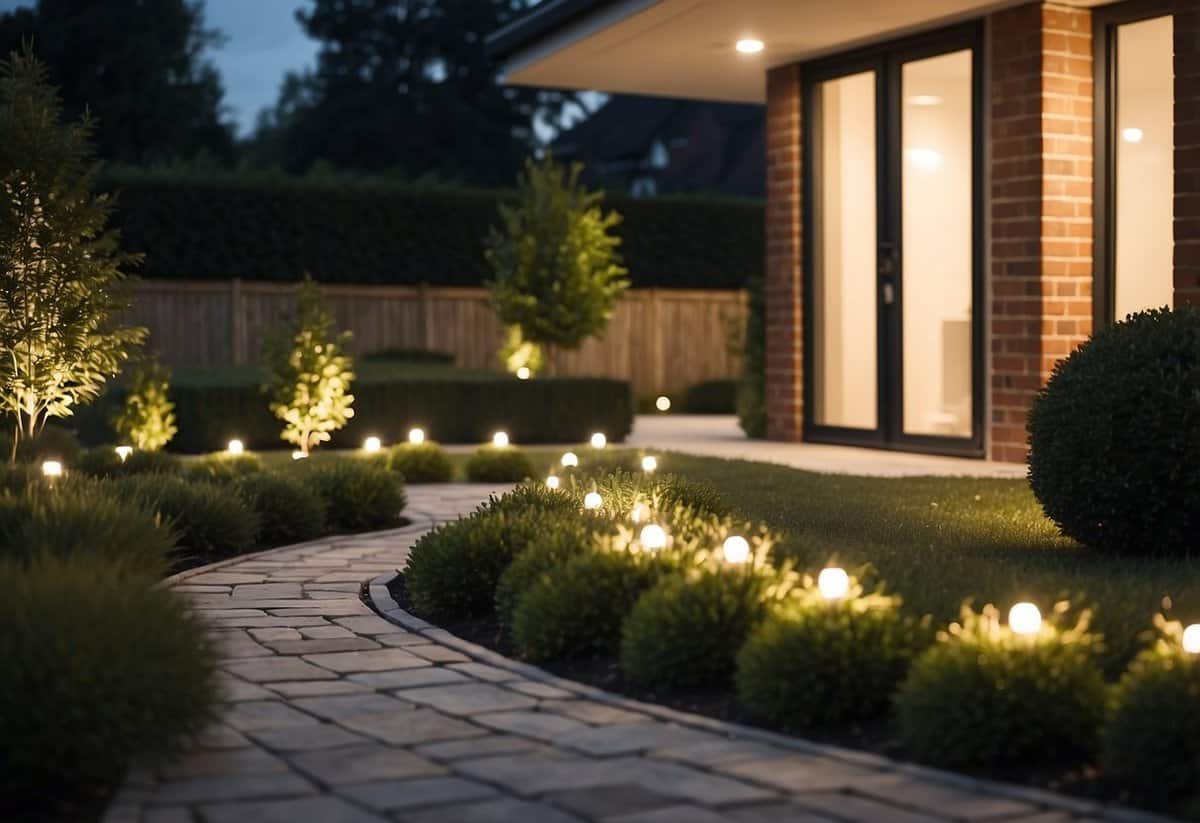Front Garden Design Tips: Create a Welcoming Space
Transforming your front yard into a beautiful garden can enhance the curb appeal of your home and create a welcoming atmosphere for guests. Whether you prefer a lush, green look or a splash of colorful flowers, there are countless ways to design a front garden that reflects your style.

Why should you care about front garden design? A well-planned garden not only makes your home more attractive but can also increase its value. Simple changes like adding a lovely pathway or vibrant plants can make a big difference in how your home looks and feels.
1) Use Curved Walkways

Curved walkways can bring a natural and dynamic look to your front garden. They add a flow that straight paths often lack.
Consider using materials like versatile curved tiles or mulch borders to achieve this effect.
Incorporating softscape elements like plants along the edges can enhance the charm and create a welcoming path to your door.
For inspiration, you might check out some ideas on A Nest With A Yard and Homes & Gardens.
2) Incorporate Water Features

Adding a water feature can give your front garden a calm, inviting vibe. A small pond or fountain draws attention and can attract birds and other wildlife.
Consider a modern garden pool for a sleek, stylish look. You can line it with plants like evergreens and hostas for extra texture.
If you have limited space, a raised pond can be a great focal point. Easy to maintain, these ponds can be a charming addition to any courtyard.
3) Create a Focal Point

A focal point in your front garden draws the eye and makes your space look organized and appealing.
You can use a fountain or water feature to pleasantly attract attention with the movement and sound of water. These look great at the center of patios or at the end of pathways.
Another option is to train climbing plants like honeysuckle or roses over a doorway or pergola. They not only look stunning but also add a lovely fragrance to your garden.
4) Utilize Raised Beds

Raised beds can make your front garden stand out. They offer better soil control and drainage, which helps your plants thrive.
You can choose from various designs. For ideas, check out these raised garden bed design ideas or front yard raised garden beds.
Raised beds also make gardening easier on your back. Whether you grow flowers or vegetables, raised beds add a neat, organized look to your front yard.
5) Plant Low-Maintenance Perennials

Choosing low-maintenance perennials is a smart way to keep your front garden beautiful without spending a lot of time on upkeep. Plants like Black-eyed Susan bloom in rich tones of gold and bronze.
Consider adding asters, echinacea, and sedum. These plants provide beautiful blooms year after year. Peonies, known for their showy flowers, are another great choice once they are established, thriving for decades under the right conditions.
6) Integrate Outdoor Lighting

Adding the right outdoor lighting can transform your front garden. Use string lights in trees to create a cozy atmosphere.
You can place solar or battery-powered string lights in dark areas. For a decorative touch, consider festoon lights draped over an arch or fence.
Globe-shaped lights work well in gravel gardens or under plants. Varying beam angles can add layers of interest.
7) Add Decorative Garden Ornaments

Decorative garden ornaments can instantly enhance the beauty of your front yard.
Consider adding lanterns or unique lawn ornaments to create a welcoming and charming atmosphere.
Try incorporating glowing rocks by painting rocks with glow-in-the-dark paint. This will add a magical touch to your garden at night.
Hanging a decorative bouquet on a fence can also add interest and make your space feel cozy and inviting.
8) Choose Drought-Tolerant Plants

Picking drought-tolerant plants can save water and keep your garden thriving. Many of these plants need less water and can handle dry spells.
Look for plants like black-eyed Susan, which bloom beautifully and are also deer-resistant. Other good choices include lavender, lamb’s ear, and Russian sage. These plants not only survive with less water but also add color and texture to your garden.
Adding mulch around your drought-tolerant plants helps reduce water loss. This simple step can also keep weeds at bay, making your garden easier to maintain.
For more ideas, check out drought-tolerant landscaping suggestions.
9) Craft a Cozy Seating Area

Transform your front yard into a welcoming space by adding a seating area. Start by placing a few comfortable chairs or a bench. Adding twinkling string lights can make the space magical in the evening.
Incorporate potted plants for a natural touch. Mixing large and small plants adds visual interest and connects you with nature. Consider adding a small table so you can enjoy your morning coffee or chat with neighbors.
10) Mulch to Reduce Weeds

Mulching is a great way to keep those pesky weeds in check in your front garden. It covers the soil, blocking sunlight that weeds need to grow.
Woodchips are popular and can often be obtained for free from your local tree surgeon (more about woodchips).
Bark mulch is also effective, preventing up to 90% of weeds (learn about bark mulch).
Remember, rocks as mulch might look nice but can harm your garden by heating up too quickly (find out why).
Choosing the Right Plants

Selecting the best plants for your garden involves considering the climate of your area and the quality of your soil. These factors are crucial to ensure your plants thrive and create a beautiful, sustainable garden.
Considering Climate
Climate plays a big role in plant selection. First, check the hardiness zone of your area. This will tell you which plants can survive your local winter temperatures.
If you live in a hot, dry region, choose drought-tolerant plants like succulents and cacti. These plants require less water and can handle high temperatures. On the other hand, if your area receives a lot of rain, select plants that thrive in moist conditions. Ferns and certain types of hostas are great for wet environments.
Think about the sunlight your garden gets. Some plants like roses need full sun, while others prefer shade. Knowing these preferences helps you place plants in the right spots.
Soil Quality
Soil quality affects how well your plants grow. Start by testing your soil to find out its pH level and type. A pH between 6 and 7 is ideal for most plants.
If you have sandy soil, it drains quickly but may lack nutrients. Adding organic matter like compost can improve it. Clay soil holds water well but can be heavy and compact. Mixing in sand or compost can help loosen it up.
Consider using raised beds if your soil is poor. This allows you to control the soil quality more easily. Make sure to choose plants that match the pH and type of your soil for the best results.
Creating a Layout Plan

Designing your front garden layout involves balancing beauty with practical functionality. Key elements include arranging plants thoughtfully and creating pathways that enhance accessibility and aesthetics.
Balancing Aesthetics and Functionality
When planning your garden, it’s important to blend beauty with practical needs. Start by thinking about what purpose each area will serve. For example, place plants that require more sunlight in sunnier spots and shade-tolerant plants where there’s more cover.
Use layering techniques to add depth and interest. Tall plants can go at the back, medium-sized plants in the middle, and shorter ones at the front. This not only looks good but also ensures that every plant gets enough light.
Consider your garden’s color scheme. Mixing bright colors with more subdued tones can create a visually pleasing effect. Also, think about how plants will look in different seasons. You might want a mix of evergreens and seasonal flowers to keep your garden vibrant year-round.
Incorporating Pathways
Pathways are a key feature in any garden. They guide visitors through the space and can highlight special areas, like a flower bed or a seating nook. Choose materials that match your garden style, such as gravel, brick, or stepping stones.
Width is important too. A narrow path might be cozy, but make sure it’s wide enough for easy walking, especially if you plan to move gardening tools or plants. Curved paths can make a small garden feel larger and more interesting.
Placement of paths should also consider functionality. For instance, a path leading from your driveway to the front door should be direct and easy to navigate. In other areas, paths can meander more, inviting exploration.
By thinking carefully about layout and paths, you can create a front garden that is both beautiful and easy to use.
For more detailed ideas on front garden layout, check out these front yard garden ideas for newbies.
Maintaining Your Front Garden

Proper maintenance of your front garden ensures it remains beautiful and healthy year-round. Key areas of focus include watering techniques and pruning.
Watering Techniques
Watering your garden correctly is crucial for plant health. Use a soaker hose to deliver water directly to the roots, minimizing evaporation. Early morning is the best time to water, as it reduces water loss and minimizes fungal growth. Avoid watering during the heat of the day.
Using mulch helps retain moisture in the soil. Organic mulches like bark chips or straw are excellent choices. They not only keep the soil moist but also enrich it as they decompose. Check soil moisture regularly to determine if additional watering is needed.
Drip irrigation systems can be very effective and save water. These systems deliver water slowly and steadily to the plant roots, ensuring they get adequate hydration without wastage. For smaller gardens, watering cans or handheld hoses can provide sufficient control over water distribution.
Pruning and Trimming
Regular pruning and trimming keep your plants healthy and looking their best. Use sharp, clean tools to prevent plant damage and disease spread. Remove dead or diseased branches promptly to encourage new growth and protect the rest of the plant.
Focus on shaping shrubs and bushes to maintain their aesthetic appeal. This practice also allows for better air circulation and light penetration, which is crucial for plant health. For flowering plants, trim spent flowers to stimulate more blooms.
In late winter or early spring, do a major pruning to prepare plants for the growing season. This is the ideal time to remove any frost-damaged branches and shape your plants for optimal growth. Always research the specific pruning needs of each plant species in your garden.







